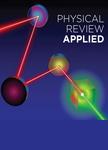版权所有:内蒙古大学图书馆 技术提供:维普资讯• 智图
内蒙古自治区呼和浩特市赛罕区大学西街235号 邮编: 010021

作者机构:Department of Physics and Astronomy University of Missouri Columbia Missouri 65211 USA Material Science Division Argonne National Laboratory Lemont Illinois 60439 USA Department of Applied Mathematics University of Colorado Boulder Colorado 80309-0526 USA Department of Physics Division for Theoretical Physics Chalmers University of Technology 412 96 Gothenburg Sweden Northwestern-Argonne Institute of Science and Technology 2145 Sheridan Road Evanston Illinois 60208 USA Computation Institute The University of Chicago 5735 South Ellis Avenue Chicago Illinois 60637 USA
出 版 物:《Physical Review Applied》 (Phys. Rev. Appl.)
年 卷 期:2017年第8卷第1期
页 面:014034-014034页
核心收录:
基 金:Materials Theory Institute Division of Materials Sciences and Engineering, DMSE U.S. Department of Energy, USDOE Argonne National Laboratory, ANL Office of Science, SC National Science Foundation, NSF, (DMR-1406568, DMR-1406568) Vetenskapsrådet, VR, (637-2014-6863)
主 题:Spin transfer torque Spin waves Spintronics Spin valves Landau-Lifschitz-Gilbert equation
摘 要:Recent experiments on spin-torque oscillators have revealed interactions between multiple magnetodynamic modes, including mode coexistence, mode hopping, and temperature-driven crossover between modes. The initial multimode theory indicates that a linear coupling between several dominant modes, arising from the interaction of the subdynamic system with a magnon bath, plays an essential role in the generation of various multimode behaviors, such as mode hopping and mode coexistence. In this work, we derive a set of rate equations to describe the dynamics of coupled magnetodynamic modes in a nanocontact spin-torque oscillator. Expressions for both linear and nonlinear coupling terms are obtained, which allow us to analyze the dependence of the coupled dynamic behaviors of modes on external experimental conditions as well as intrinsic magnetic properties. For a minimal two-mode system, we further map the energy and phase difference of the two modes onto a two-dimensional phase space and demonstrate in the phase portraits how the manifolds of periodic orbits and fixed points vary with an external magnetic field as well as with the temperature.